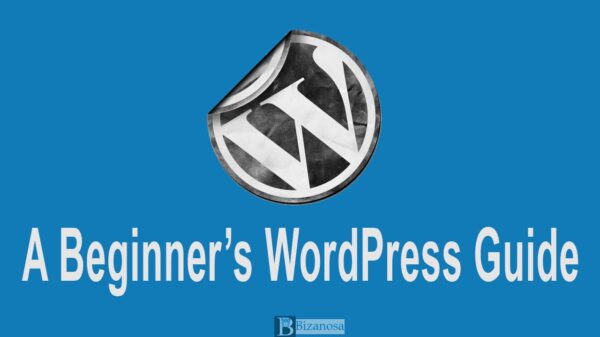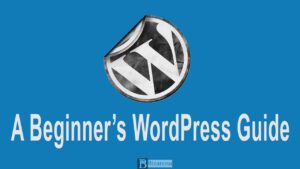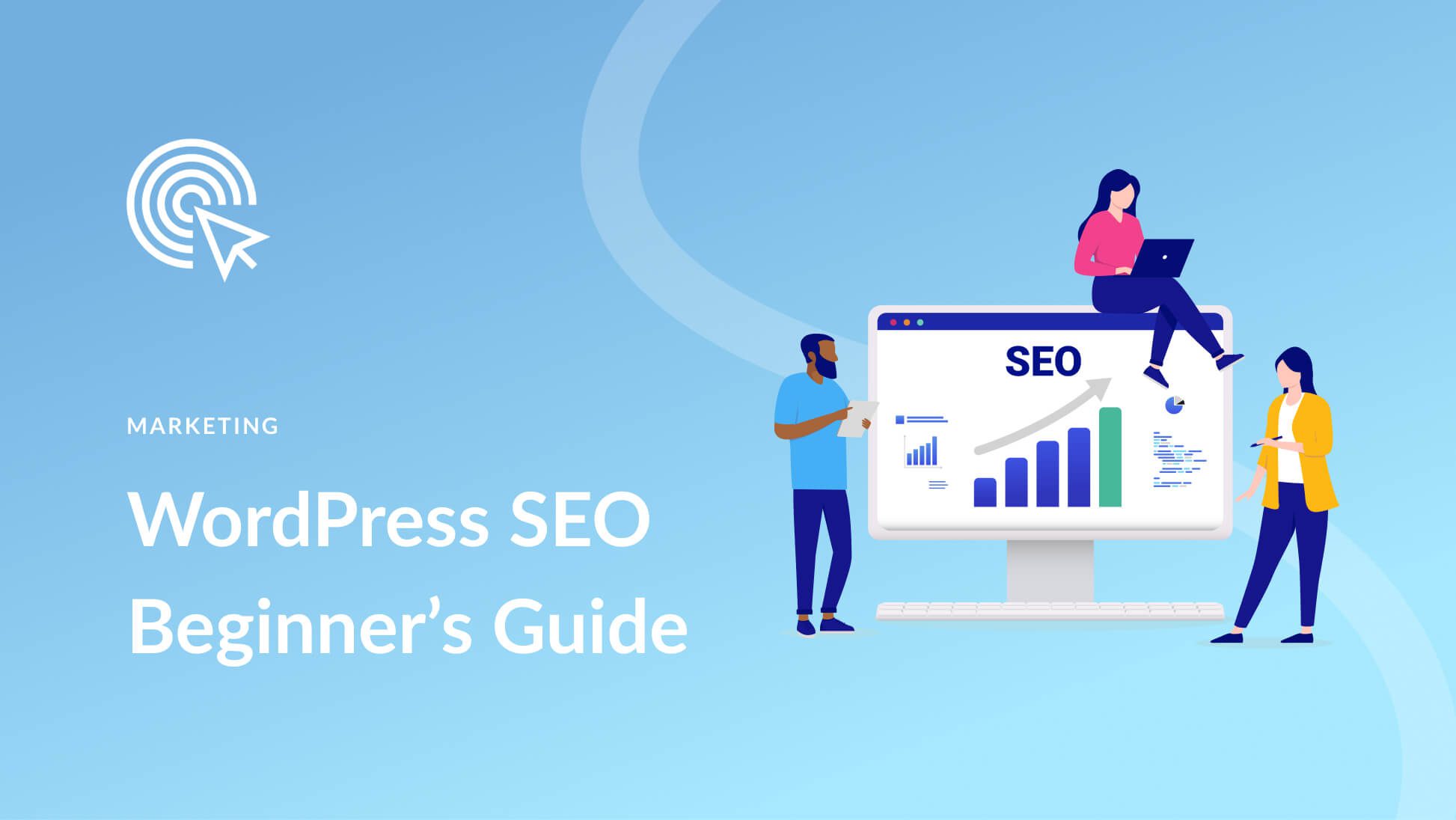WordPress Absolute Beginner’s Guide in 2024
Embark on your WordPress journey with confidence! Our absolute beginner’s guide covers everything from setup to customization. Learn essential skills, explore plugins, and master SEO to create your dream website. Start your WordPress adventure today!
The Rise Of WordPress
The Rise of WordPress reveals a phenomenal transformation. What began as a simple blogging tool has evolved. Now a leading content management system.
WordPress powers an immense portion of the internet. This section of our guide delves into its journey and current dominance in the digital world.
From A Blogger’s Tool To Web Powerhouse
WordPress began as a basic platform for bloggers. Easy and free. With time, its features expanded. Themes and plugins arrived. They changed the game.
Now, WordPress is not just for blogs. A robust system for all types of websites. E-commerce stores, forums, and business sites all thrive on WordPress. Its flexibility and scalability have made it a web powerhouse.
- Themes: Design templates that make websites look professional.
- Plugins: Add-ons that increase functionality, from SEO to security.
- E-commerce: WooCommerce and other tools have revolutionized online selling.
Key Statistics And Usage Trends
Diving into the numbers, WordPress’s growth is clear. Surprising stats show how widely used and popular WordPress is. Over 40% of websites use it, with countless plugins and thousands of themes available. Its usage trends show its dominance and innovation.
Small businesses and large corporations prefer WordPress. Its ease-of-use and versatility draw new users every day. This CMS will continue to grow even further in the coming years.
First Steps With WordPress
Embracing the digital world starts with building a website, and WordPress is the toolbox to help you construct it with ease. Let’s embark on this website creation journey together by taking the first important steps with WordPress. This beginner’s guide will pave the path to launching your own formidable digital footprint.
Choosing A Domain And Hosting
Your domain is your address on the web—it’s how people find you. Think of a domain that reflects your brand and is easy to remember. Picking the right hosting provider is like choosing a home for your website. Reliable and affordable hosting ensures your site is always available and loads quickly for visitors.
- Domain Tips: Keep it short, relevant, and catchy.
- Hosting Must-haves: Uptime reliability, customer support, and scalability.
Installing WordPress: A Step-by-step Process
With a domain and hosting ready, installing WordPress is next. A simple process with these guided steps is.
- Log in to your hosting account and access the control panel.
- Find the ‘WordPress’ or ‘Website’ installer section.
- Click ‘Install’ and select your domain to launch the setup.
- Fill in site details: site name, admin username, and password.
- Review settings, then click ‘Install WordPress’.
After installation, you’ll access the WordPress dashboard where your website’s journey truly begins.
Navigating The Dashboard
Embracing WordPress means stepping into a world of endless possibilities. The Dashboard builds the core of your admin area, acting as a control tower for your website’s content and settings. Let’s dive into navigating this central hub, ensuring a smooth takeoff as you start your WordPress journey.
Understanding The Admin Panel
The Admin Panel is your command center. Here, you’ll oversee your site’s activities—from crafting posts to moderating comments. This guide helps you understand and manage it with ease.
- Dashboard Home: Displays an overview and quick-access links.
- Posts: Where you create and manage articles.
- Media: Upload and organize images and videos here.
- Pages: Build and edit static pages for your site.
- Comments: Moderate user feedback and discussions.
- Appearance: Customize themes and widgets.
- Plugins: Add new features and functionality.
- Users: Manage roles and permissions.
- Settings: Tweak your site’s configuration and performance.
Customizing User Settings And Profiles
Tailoring your profile personalizes your WordPress experience. Adjust settings and details to fit your preferences. Let’s customize it right away.
- Navigate to the Users section.
- Click Your Profile.
- Edit your options, such as biographical info and contact details.
- Change the admin color scheme for an aesthetic touch.
- Set your profile picture for a recognizable identity.
- Update your password regularly for security.
Remember, your profile resonates with your brand. Keep it updated and reflective of your image.
Themes And Plugins
They were stepping into the world of WordPress meant getting to know two crucial elements: themes and plugins. These tools are essential in shaping how a site looks and functions. Beginners need to understand these components to create a website that stands out and meets their needs.
Selecting The Right Theme For Your Site
Finding the perfect theme is like picking the right outfit for an event—it sets the tone. The theme determines your site’s style and layout. Here are steps to pick one:
- Assess your site’s purpose. A blog needs a different theme than an online store.
- Look for responsive design. It should look good on phones and computers.
- Read user reviews. See what others say about the theme’s performance.
- Check for updates. A good theme gets regular updates from its creators.
Consider trying a few themes. You can change them without losing content. Aim for a simple, clean design that loads fast.
Essential Plugins For Every WordPress User
Plugins are like a website’s Swiss army knife. They add functions and features to your site. Here are some essential plugins for beginners:
Yoast SEO improves search engine visibility. Akismet fights spam comments. WooCommerce turns your website into an online store. Contact Form 7 allows visitors to contact you.
Wordfence Security keeps your website safe from hackers. These plugins help with SEO, security, selling products, and communication with your audience. Always check for high ratings and regular updates when choosing plugins.
Crafting Your First Post And Page
Welcome to the exciting journey of publishing your first content on WordPress! Learning how to create posts and pages is important for your online presence. It allows you to share your interests and start a blog. Let’s dive into the essentials of crafting your first WordPress post and ensure it stands out to readers and search engines alike.
Using The WordPress Editor
The WordPress Editor, also known as Gutenberg, is a powerful tool that transforms content creation into a seamless process. Familiarize yourself with its features to build posts and pages efficiently:
- Blocks: Each piece of content, whether text, image, or video, is a block. You can add, rearrange, or customize blocks easily.
- Toolbar: Find formatting options like bold, italic, and text alignment on the block’s toolbar.
- Drag and Drop: Reposition blocks with this handy feature to perfect your layout.
- Embeds: Add content from platforms like YouTube or Twitter directly into your post.
Experiment with different blocks and formatting tools to find the perfect balance for your content.
Best Practices For SEO and Readability
For your content to reach its audience, optimize it for search engines and prioritize readability. Implement these best practices to enhance visibility and engagement:
- Choose a main keyword related to your topic and use it in the title, headings, and first paragraph.
- Focus Keyword: Choose a primary keyword relevant to your topic and use it in the title, headings, and first paragraph.
- Meta Description: Craft a compelling summary for your post that includes your focus keyword.
- Headings Structure: Structure your content with subheadings (H2, H3, H4) for easy navigation and emphasis.
- Short Paragraphs: Break content into small paragraphs to enhance readability on all devices.
- Internal Links: Link to other posts or pages on your site to guide readers and boost SEO.
- Alt Text for Images: Describe your images with alt text, including keywords, for better search engine visibility.
Adhere to these strategies to create content that not only reads well but also performs well in search rankings.
Maintaining Your WordPress Site
Maintaining your WordPress site ensures it runs smoothly, stays secure, and provides a great experience for your visitors. Like any well-oiled machine, your site needs regular attention. Below are essential practices for keeping your WordPress site in top shape.
Regular Updates And Backups Strategy
Keeping WordPress, themes, and plugins up-to-date is vital. Updates often include security patches and new features. Create a schedule for checking and installing updates to avoid missing out:
- Weekly check for updates
- Before updates, always back up your site
- Use a reliable plugin for scheduled backups
- Store backups in a secure location, like cloud storage
A good backup strategy can save you from data loss. Ensure it includes:
- Database and file backup
- Scheduled automatic backups
- Off-site backup storage
Security Tips To Protect Your Website
Security is non-negotiable. Protect your site with these practical tips:
- Use strong passwords for all accounts
- Implement a firewall to block attacks
- Install a security plugin to monitor threats
- Limit login attempts to prevent brute force attacks
- Keep your site’s software updated to prevent vulnerabilities
- Use SSL encryption for safe data transfer
Monitor your site frequently, and act fast on security alerts. A secure site is a reliable site for your users.
FAQ (Frequently Asked Questions) For A Beginner’s Guide To WordPress
1. How Do I Learn WordPress For Beginners?
Ans:- To learn WordPress as a beginner, start with the WordPress. org Codex. Engage with online tutorials, WordPress-focused blogs, and YouTube channels.
Practice by creating a free site on WordPress. com or a local server. Join WordPress communities and forums for support and advice.
2. Is WordPress Easy To Use For A Beginner?
Ans:- Yes, WordPress is user-friendly for beginners, offering intuitive management and a straightforward interface. Its visual editors and pre-made templates simplify website creation.
3. Is WordPress Still Relevant in 2024?
WordPress is still important in 2023. Many websites use it. This is because of its easy-to-use platform and strong features. Its active community and ongoing updates ensure it keeps pace with web technology trends.
4. Can A Beginner Build a Website With WordPress?
Yes, beginners can use WordPress to create a website because it has an easy interface and helpful tutorials.
5. What Is WordPress Used For?
WordPress is a flexible system for creating and managing websites for blogging, e-commerce, portfolios, and more.
6. Is WordPress Beginner-friendly?
WordPress is renowned for its user-friendly interface, making it ideal for beginners to build and manage websites without needing advanced technical skills.
7. Can WordPress Host My Website?
Yes, WordPress offers hosting services through WordPress. com, but you can also use WordPress. org to self-host your website with an external hosting provider.
8. How Much Does WordPress Cost?
WordPress software is free, but hosting, domain registration, and premium themes or plugins can cost extra.
9. Does WordPress Require Coding Knowledge?
You don’t need coding skills to use WordPress well. It has many themes and plugins that let you make websites without much coding.
10. What Is A WordPress Plugin?
A WordPress plugin is an extra tool that helps you add more features and customize your website easily.
Conclusion
Embarking on your WordPress journey need not be daunting. This guide has walked you through the essentials, from set-up to customization.
Remember, practice leads to proficiency. Dive in, tweak, and experiment. Your website’s potential is vast, as is your capability to harness it.
Happy blogging!



